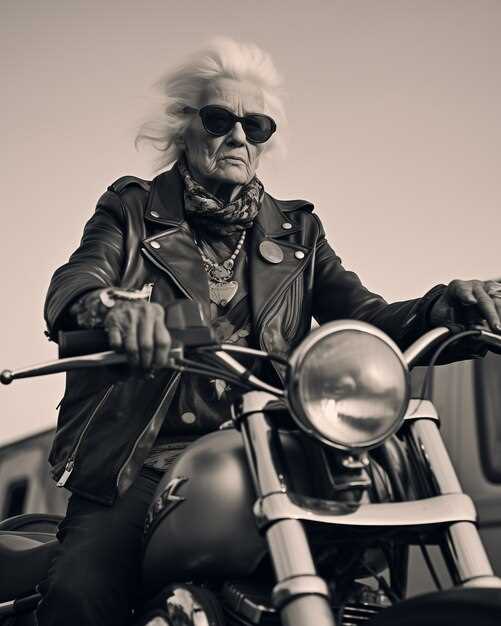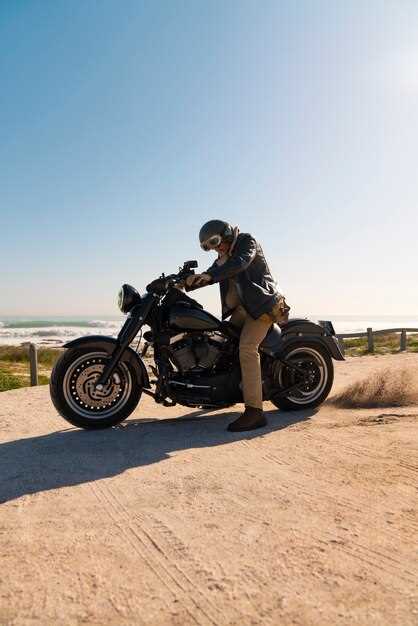

The evolution of chopper motorcycles is a fascinating journey that reflects broader cultural shifts and personal expressions of freedom on the open road. Emerging from the post-World War II era, these uniquely customized bikes began as a symbol of rebellion against conventional norms. Riders sought to create something distinct, stripping down standard motorcycles and reimagining them as personal statements.
In the 1960s and 1970s, chopper motorcycles gained mainstream popularity, largely influenced by movies like Easy Rider. This film showcased the allure of the chopper culture and ignited a movement that resonated with a generation searching for adventure and self-identity. The customization of these bikes became an art form, with riders adding elongated forks, unique paint jobs, and aftermarket parts, enhancing both aesthetics and performance.
Over the decades, the chopper scene has experienced various revivals and transformations, mirroring evolving societal values and technological advancements. Today, while the chopper may be perceived as a relic of a bygone era, it continues to inspire new generations of motorcycle enthusiasts who blend traditional craftsmanship with modern innovation. Understanding the rise of chopper motorcycles is not just about exploring a mechanistic trend; it’s about recognizing a culture that celebrates individuality and freedom.
How Chopper Motorcycles Transformed Custom Motorcycle Culture

Chopper motorcycles emerged as a symbol of freedom and individuality during the post-World War II era, fundamentally altering the landscape of custom motorcycle culture. Their distinctive elongated designs and unique aesthetics broke away from conventional motorcycle styles, encouraging enthusiasts to express personal creativity. This transformation began in the 1960s, when riders, inspired by the counterculture movement, sought to create motorcycles tailored to their desires rather than adhering to factory standards.
The chopper phenomenon was characterized by significant modifications, including extended front forks, customized frames, and unique paint jobs. These modifications not only distinguished choppers from standard models but also reflected the individuality of their builders. This emphasis on personalization propelled the concept of custom builds to the forefront of motorcycle culture, leading to the proliferation of specialized workshops and custom bike builders.
The iconic status of choppers was further solidified through their portrayal in films such as “Easy Rider,” which popularized the notion of the motorcycle as a tool for rebellion and self-expression. As a result, the chopper became synonymous with freedom and adventure, attracting a diverse array of riders. This cultural significance inspired a renewed interest in custom motorcycles, fueling a movement that encouraged riders to modify their bikes and explore the limits of design.
Today, the influence of chopper motorcycles continues to resonate within the custom motorcycle community. Events such as bike shows and custom competitions celebrate innovative designs while fostering a spirit of camaraderie among builders and enthusiasts. The chopper’s legacy is evident in the wide variety of styles and modifications found in contemporary custom motorcycles, reflecting the creativity and diversity that choppers have inspired throughout the decades.
Key Figures and Their Contributions to the Chopper Scene

The chopper motorcycle scene has been shaped by various influential figures whose creativity and passion have left an indelible mark on the culture. One of the most significant pioneers was Arlen Ness, often referred to as the “King of Choppers.” His innovative designs and custom builds, characterized by extended front ends and distinctive paint jobs, set new standards in the custom motorcycle industry. Ness’s contribution to the aesthetic and engineering aspects of chopper motorcycles elevated them from simple modifications to art forms.
Another key figure is Jesse James, known for his role in popularizing custom choppers through his television show, “Monster Garage.” James blended traditional craftsmanship with modern techniques, creating bikes that became iconic in both form and function. His bold designs and edgy style appealed to a new generation, pushing the boundaries of chopper aesthetics and engineering.
Don Emde, a former motorcycle racer and influential motorcycle journalist, has also played a critical role in the chopper scene by documenting its evolution through publications and books. Emde’s insights and critiques have provided valuable context for understanding the cultural significance of choppers over the decades, influencing both builders and enthusiasts alike.
In addition to builders and entrepreneurs, custom bike builders like Billy Lane have redefined the chopper. Lane’s focus on performance and traditional craftsmanship has led to the revival of interest in the engineering aspects of custom motorcycles, showcasing that beauty and functionality can coexist in chopper design.
Lastly, alongside these builders, the chopper scene has also been enriched by custom parts manufacturers such as Paul Yaffe. His innovations in chopper accessories have enabled builders to achieve their unique visions with greater ease, helping to sustain the creative momentum within the chopper community.
The Evolution of Chopper Design and Technology Over Decades
The chopper motorcycle, known for its distinctive style and customization, has undergone significant transformations since its inception in the mid-20th century. In the 1960s, the initial wave of choppers emerged from the customizations made by veterans returning from World War II, leading to a surge in creativity and individuality. These early models featured elongated frames, extended forks, and minimalist designs that prioritised aesthetics over functionality.
As the 1970s approached, the chopper culture gained momentum, largely influenced by films like “Easy Rider.” Builders began using larger engines and adopted more radical modifications, including raked-out front ends and sleek gas tanks, which further defined the chopper identity. During this period, the use of advanced materials and chrome plating became more prevalent, enhancing both the visual appeal and performance of these machines.
In the 1980s and 1990s, the rise of mainstream motorcycle manufacturers changed the landscape of chopper design. Custom builders began to incorporate elements of factory-built bikes, leading to a blend of traditional chopper aesthetics with modern engineering. This era saw the introduction of technologies such as hydraulic systems for smoother rides, improved brake systems, and more reliable engines, making choppers not just a style statement but also more practical for everyday use.
The 2000s ushered in a new wave of chopper enthusiasts, with advancements in computer-aided design (CAD) facilitating precision engineering. Builders adopted this technology to create intricate designs that were previously unimaginable, enabling a surge in unique, bespoke motorcycles. The rise of the internet also allowed for greater knowledge sharing and collaboration within the chopper community, leading to innovative ideas and techniques in design and engineering.
Today, chopper motorcycles continue to evolve with a focus on sustainability and technology. Modern builders are integrating eco-friendly materials and electric powertrains into their designs, reflecting a shift towards greener riding options. This evolution not only honors the rich history of chopper culture but also sets the stage for future innovations, as the spirit of customization and individuality endures in this iconic motorcycle genre.






